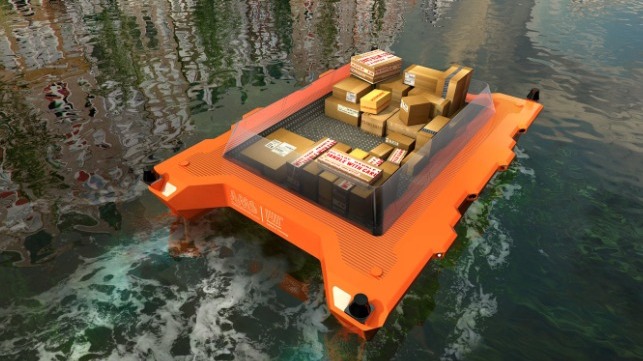Autonomous Vessels are Becoming a Commercial Reality

The Autonomous Ship Technology Symposium 2021 conference brought together the largest public and private entities in maritime autonomy. Over the span of two days, leading stakeholders discussed the full range of issues in the field, including current and future IMO actions; cybersecurity; data management; real-world USV interaction; control systems; collision/obstacle avoidance; and the future of mariners in the autonomous world.
Worldwide, there are now more than 1,000 maritime autonomous surface ships (MASS) operated by more than 53 organizations. These vessels work alongside manned vessels with minimal autonomous-specific regulation. With this lack of guidance in mind, the International Maritime Organization (IMO) presented the results of its latest autonomous scoping exercise and its road map for autonomous regulation. Items under consideration include remote control station regulation; determination of remote operators as mariners; autonomous shipping SOLAS equipment requirements; and regional-specific regulations. Though the task remains large, this gap analysis was the first step towards autonomous regulation by the IMO.
The conference’s second day delved into the utilization of the 1,000 active unmanned surface vessels in operation around the world. Both Flemish and Dutch marine institutes are investing in inland autonomy programs in the hopes of reducing reliance on large-scale trucking. This effort will reduce the pressure on roads, ease traffic congestion, and minimize fossil fuel emissions.
The Flemish Smart Shipping program is an active autonomous initiative utilizing the 1,000-plus kilometers of Belgium’s inland canals and rivers. Its four-pronged approach combines minimally crewed autonomous ships with a smart infrastructure utilizing automated canals and locks. This is all possible through a waterborne communication network, allowing the vessels to interact with the smart infrastructure. New Flemish regulations give the autonomous vessels a legal means to operate. Smart Shipping is active in the Flemish countryside with vessels controlled by a master or mate from a centralized station. The program includes inland barges and vessels seeking and removing large floating debris from the waterways.
In the Netherlands, the City of Amsterdam and the Amsterdam Institute for Advanced Metropolitan Solutions are working with the Massachusetts Institute of Technology (MIT) to produce a fleet of autonomous vessels name RoBoat. The partners hope this autonomous network will fill the canals and waterways of Amsterdam with a modular vessel that can be outfitted for household waste removal, logistics movement and ferry operations, all based on the same hull design. This design uses a LIDAR sensor pod and an HD camera to plot a safe route through the city, and it can be seen in testing in Amsterdam. The development of RoBoat is a potentially profitable green venture, as other cities, including Copenhagen, Paris, and Tokyo have expressed interest in the modular USV.
Meanwhile, L3Harris’ autonomous vessel team has taken on the challenge of differentiating among the many kinds of vessels on the water, which all have their own right-of-way status under COLREGS. Using sensor data, the USV can determine which type of vessel it is interacting with and perform accordingly. The system factors in other vessel types and their current path in order to predict which way the vessel will move.
On the second day of the conference, participants discussed how mariners will work alongside autonomous systems. The skills needed for the next generation of deck and engineering officers will be different than those required until now. To prepare officers for this different environment, the Italian Shipping Academy has established a cadet training program, which focuses on the digitalization and automation of both manned and unmanned vessels. The training combines technical competencies in electronics, engineering, data analysis, and digital technologies with the soft skills of decision-making, problem solving and situational awareness. The academy believes that this split approach will prepare cadets for a career on board, as well as a role manning digital bridge at a remote control station.
All of the presentations emphasized that the technology for autonomous ships is here and in use. Purpose-built autonomous ships are already leaving the prototype stage, and hybrid manned/unmanned training at the cadet level is being developed and tested. The next generation of ships and shipping is upon us.
Jack Richard Dougherty, MSM is the current Head of Defense Operations for Al Seer Marine, a bespoke unmanned vessel manufacturer in the United Arab Emirates. He is a graduate of Texas A&M University at Galveston with a degree in maritime administration, and he holds a master’s degree in Cyber Security Management from the University of Houston. He is a US Navy Riverine veteran with multiple deployments, and he served as chief of staff to the previous superintendent of the Texas A&M Maritime Academy, Admiral Michael Rodriguez.
The opinions expressed herein are the author's and not necessarily those of The Maritime Executive.

